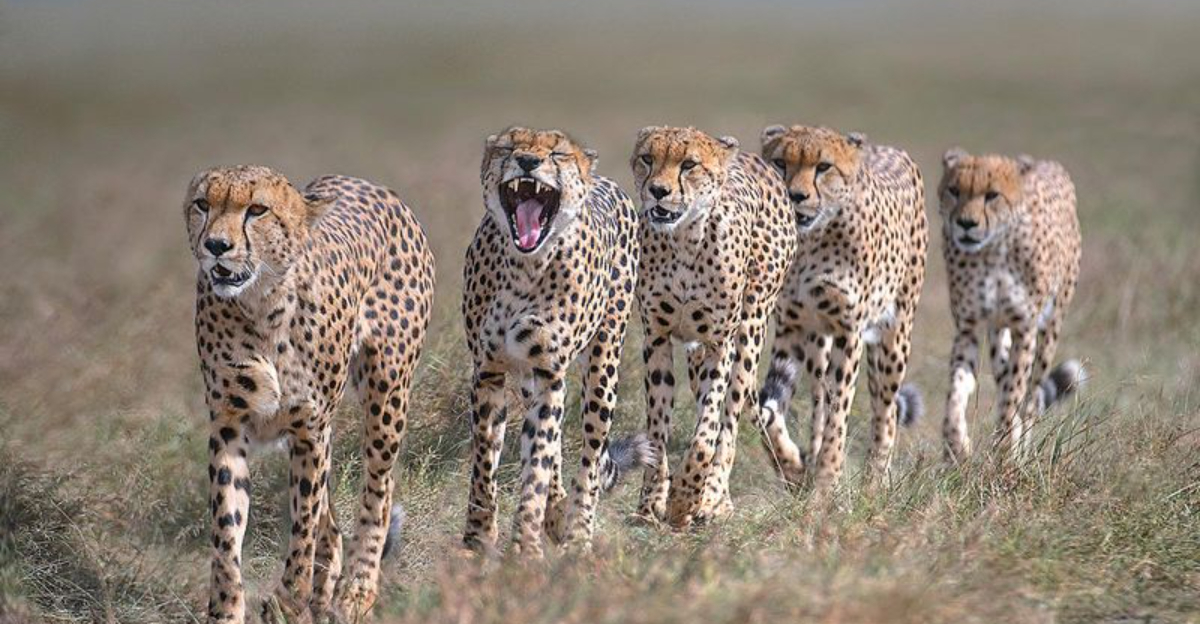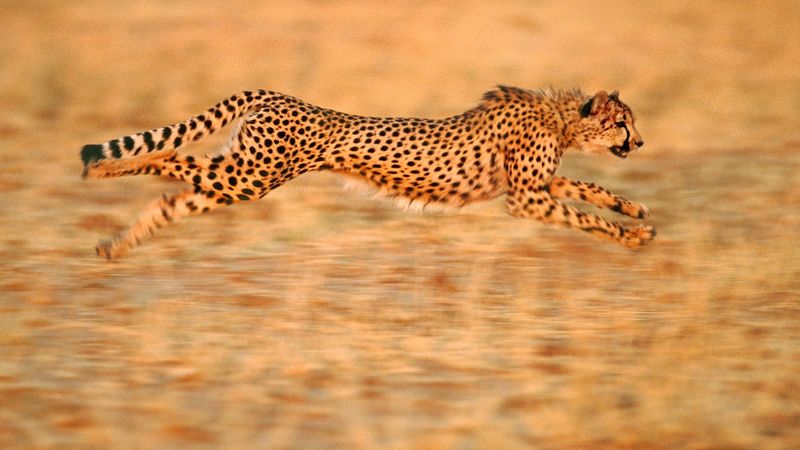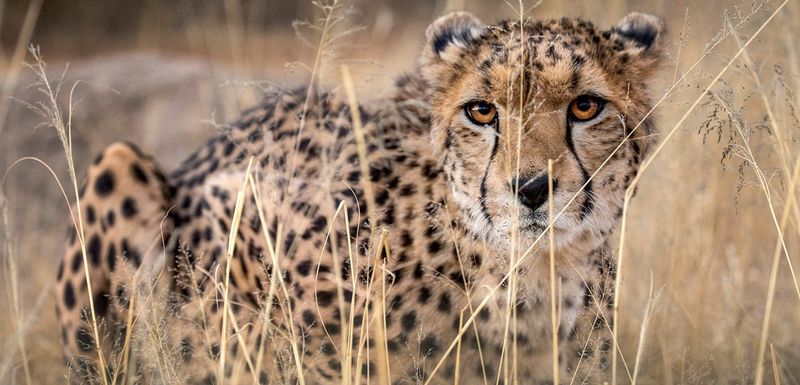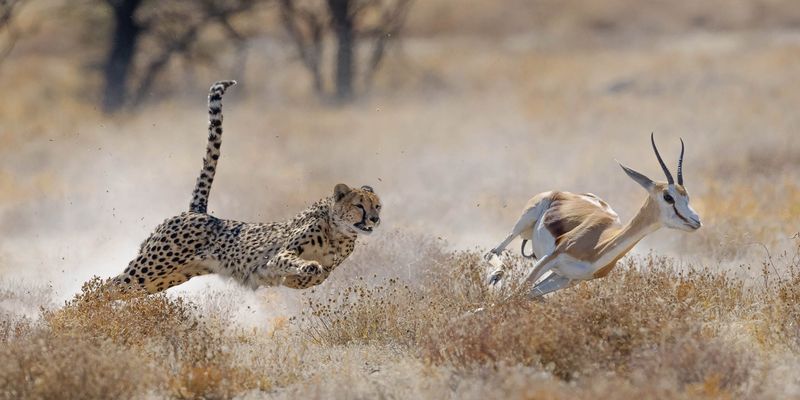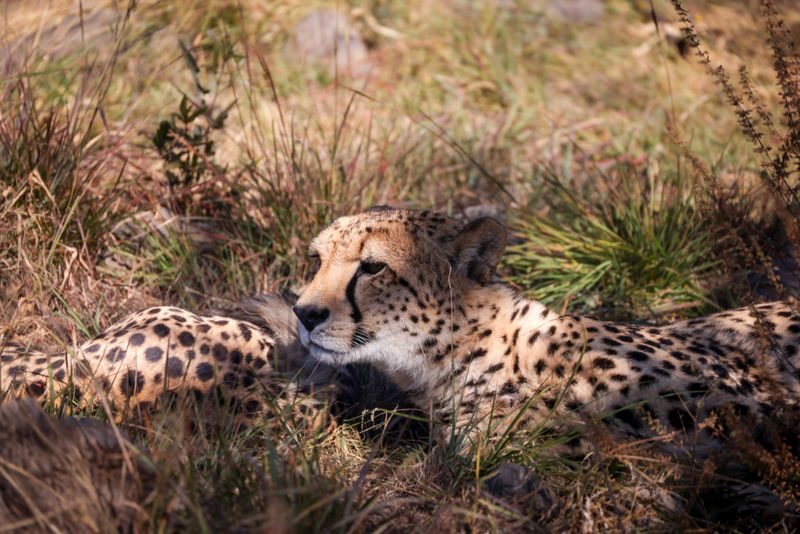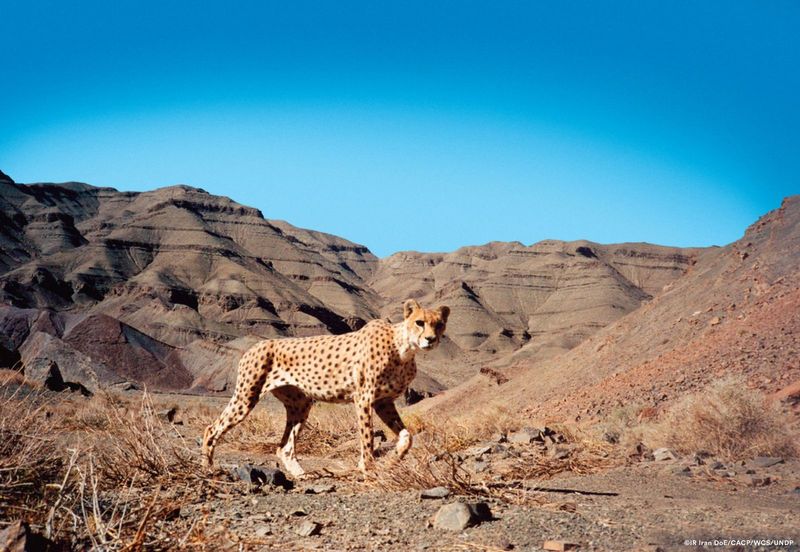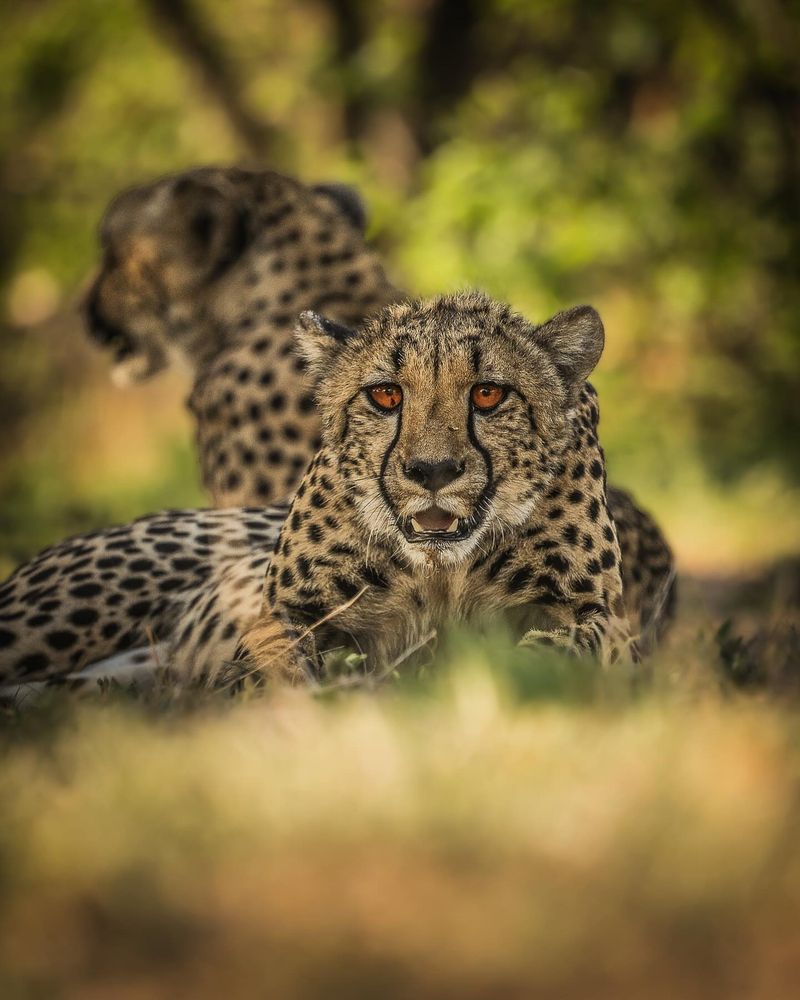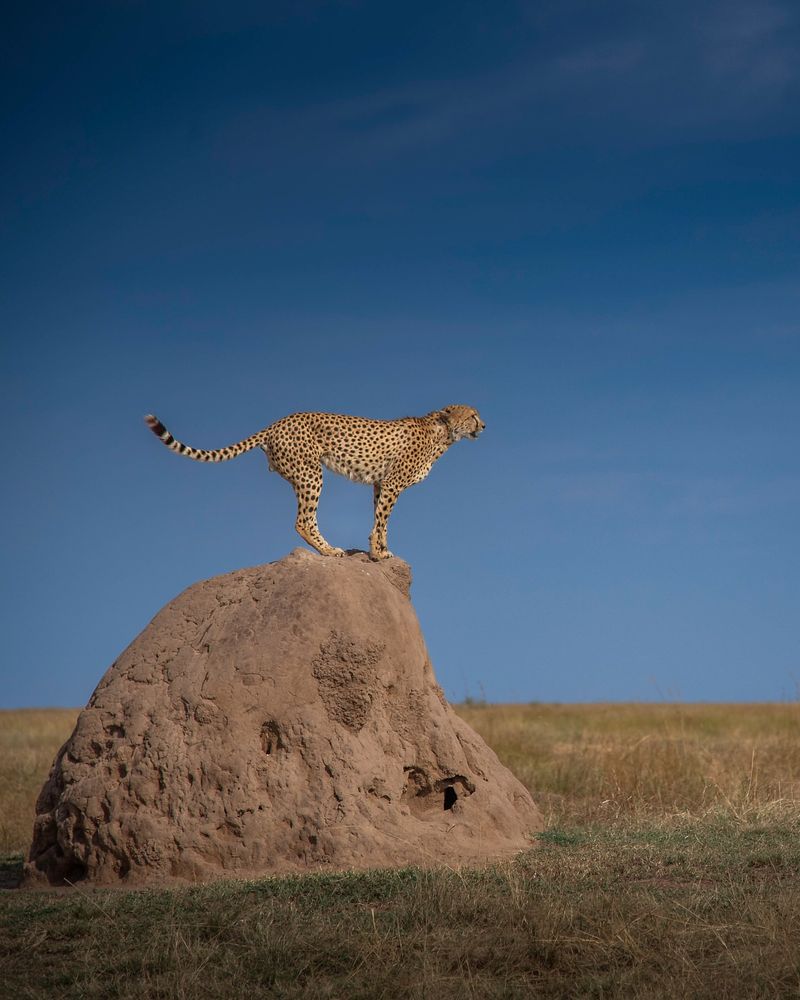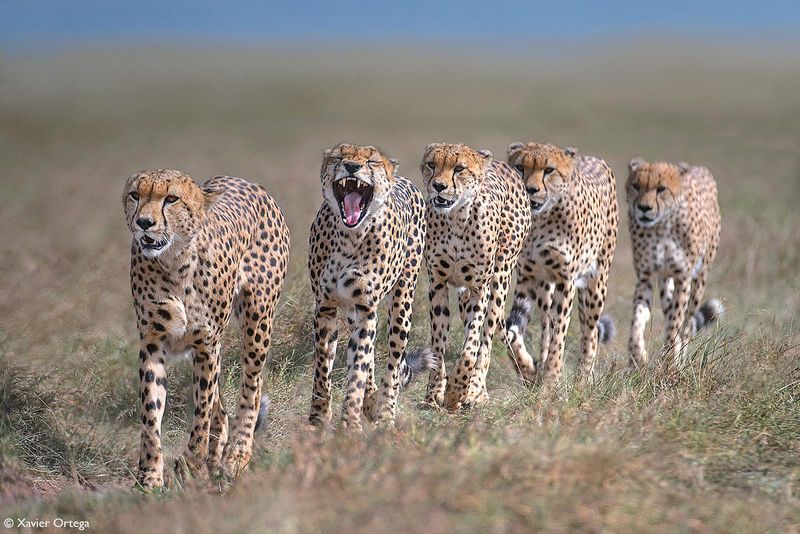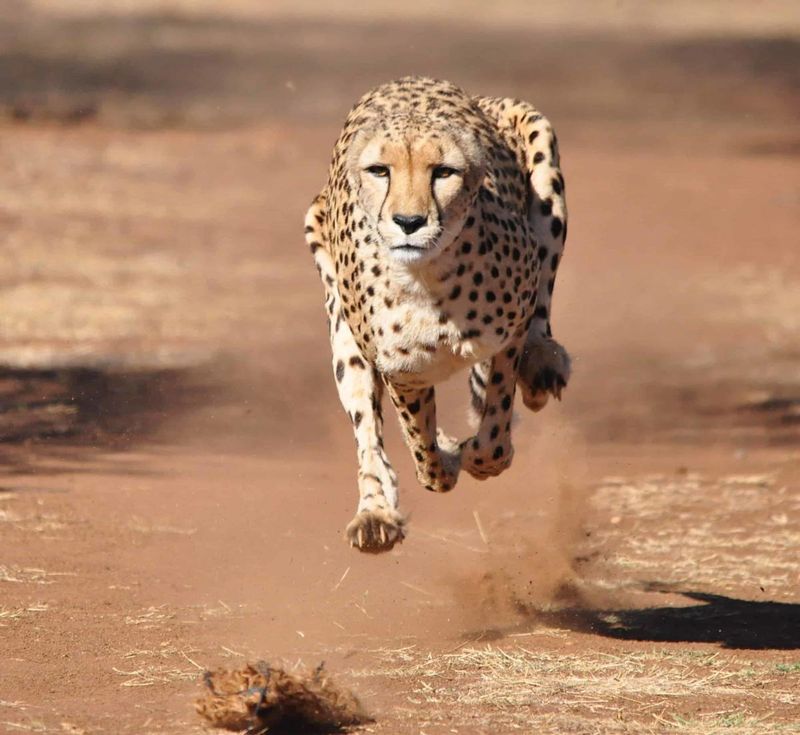📖 Table of Content:
Cheetahs are extraordinary predators, known for their unparalleled speed and agility. Their hunting strategies are a blend of instinct and skill, allowing them to thrive in their natural habitats. In this article, we explore ten distinct techniques that cheetahs use to stalk, chase, and capture their prey. Each strategy highlights the intelligence and adaptability of this iconic big cat, showcasing its remarkable ability to survive and excel in the wild. From silent stalking to cooperative hunting, these methods illuminate the cheetah’s exceptional predatory prowess.
1. High-Speed Pursuit
Rocketing from 0 to 60 mph in mere seconds, the cheetah’s acceleration is a marvel of nature. This ability allows them to close in on prey with breathtaking speed, often reaching top speeds close to 70 mph. Imagine the wind streaming past as this feline powerhouse zooms across the plains, legs stretching and contracting with precision. This speed is not just about brute force; it’s a calculated chase that depends on split-second decisions and perfect timing. During a pursuit, the cheetah’s long tail acts like a rudder, steering it through sharp turns with agility.
2. Stealthy Approach
Mastering the art of stealth, cheetahs approach their prey with quiet determination. By crouching low and using available cover, they manage to get within 50 meters unnoticed. Picture the tension in the air as this skilled predator closes the gap, every muscle primed for action. The cheetah’s spotted coat provides perfect camouflage, blending seamlessly into the grassy landscape. This silent stalking is crucial, as a successful hunt often hinges on getting as close as possible before bursting into a sprint. Patience and precision define this phase of the hunt.
3. Prey Selection
Cheetahs are discerning hunters, choosing prey with care. Typically targeting small to medium-sized ungulates, they often focus on young, weak, or isolated individuals. This strategy minimizes resistance and maximizes the chance of a successful kill. The choice of prey is not random; it reflects an understanding of vulnerability and opportunity. In the vast expanse of the savanna, this selective approach ensures energy is conserved for optimal hunts. With keen eyesight, cheetahs scan herds for the perfect moment to strike, illustrating their strategic and thoughtful nature.
4. Energy Conservation
After a high-speed chase, recovery is key for the cheetah. Their bodies are designed for rapid recuperation, allowing them to rest quickly and efficiently after exertion. Picture a cheetah, breathing heavily under a shady tree, its flanks heaving as it regains energy. This swift recovery is vital for maintaining their hunting edge, preparing them for future opportunities. In the wild, energy conservation is as crucial as the hunt itself, emphasizing the cheetah’s ability to balance exertion and rest. This strategy showcases their adaptability and survival instincts.
5. Agile Maneuvering
Cheetahs don’t just rely on speed; they expertly navigate their environment to outwit prey. By choosing hunting grounds with varied topography, they use natural features like hills and rocks for cover. Imagine a cheetah weaving through the landscape, its movements a ballet of agility and precision. This strategic use of the terrain helps them remain undetected until the last possible moment. It’s a dance of survival, where every leap and bound is calculated. The cheetah’s ability to adapt to different environments highlights their tactical intelligence and resourcefulness.
6. Silent Communication
In the world of cheetahs, silence speaks volumes. These cats often use non-verbal cues to communicate, crucial for maintaining stealth during hunts. Imagine a pair of cheetahs, exchanging subtle signals—a flick of the tail, a shift in posture—each gesture conveying intent and coordination. This silent communication minimizes noise, preventing alerting prey. It’s a symphony of quiet gestures that harmonizes their efforts perfectly. This ability to ‘speak’ without words exemplifies the cheetah’s sophisticated social dynamics and teamwork, especially among coalitions.
7. Utilizing Elevated Vantage Points
Perched atop termite mounds or low branches, cheetahs gain a strategic advantage by scanning for prey from elevated positions. This behavior allows them to spot potential targets from afar, aiding in their meticulous planning. Visualize a cheetah, eyes scanning the horizon, every twitch a calculation of distance and speed. From these vantage points, cheetahs assess the landscape, identifying both prey and potential threats. This elevated perspective is a testament to their strategic acumen, using every opportunity to refine their hunting tactics.
8. Adaptation to Environmental Conditions
Cheetahs are masters at adapting their hunting strategies to environmental conditions. Predominantly diurnal hunters, they often hunt during cooler periods at dawn or dusk. Picture a cheetah silhouetted against the rising sun, its form sleek and focused. This timing avoids competition with nocturnal predators and minimizes heat stress. By adjusting their activity to the climate, cheetahs demonstrate remarkable flexibility and foresight. This adaptation is not just about survival; it’s a finely tuned response to the challenges of their habitat, ensuring they thrive even in harsh conditions.
9. Team Coordination in Coalitions
While generally solitary, male cheetahs often form coalitions to increase hunting success. These alliances, typically among brothers, allow them to tackle larger prey. Imagine a coalition of cheetahs, moving in unison, their coordination a testament to teamwork. Each member plays a role, their combined strength creating a formidable hunting group. This cooperative behavior showcases their intelligence and adaptability, enhancing their ability to secure food in challenging environments. It’s a dynamic interplay of personalities and strategies, reflecting the social complexity of these magnificent animals.
10. Quick Dispatch of Prey
Once prey is caught, the cheetah’s priority is a swift kill. By targeting the neck or muzzle, they aim to suffocate the animal quickly, reducing struggle and risk of injury. Picture the precision and speed as the cheetah delivers the decisive bite. This method is not just about efficiency; it ensures the cheetah can enjoy its meal without delay. The quick dispatch exemplifies their predatory skill, turning a successful chase into a secure meal. It’s a clear demonstration of their lethal grace, underscoring the cheetah’s role as an apex predator.
